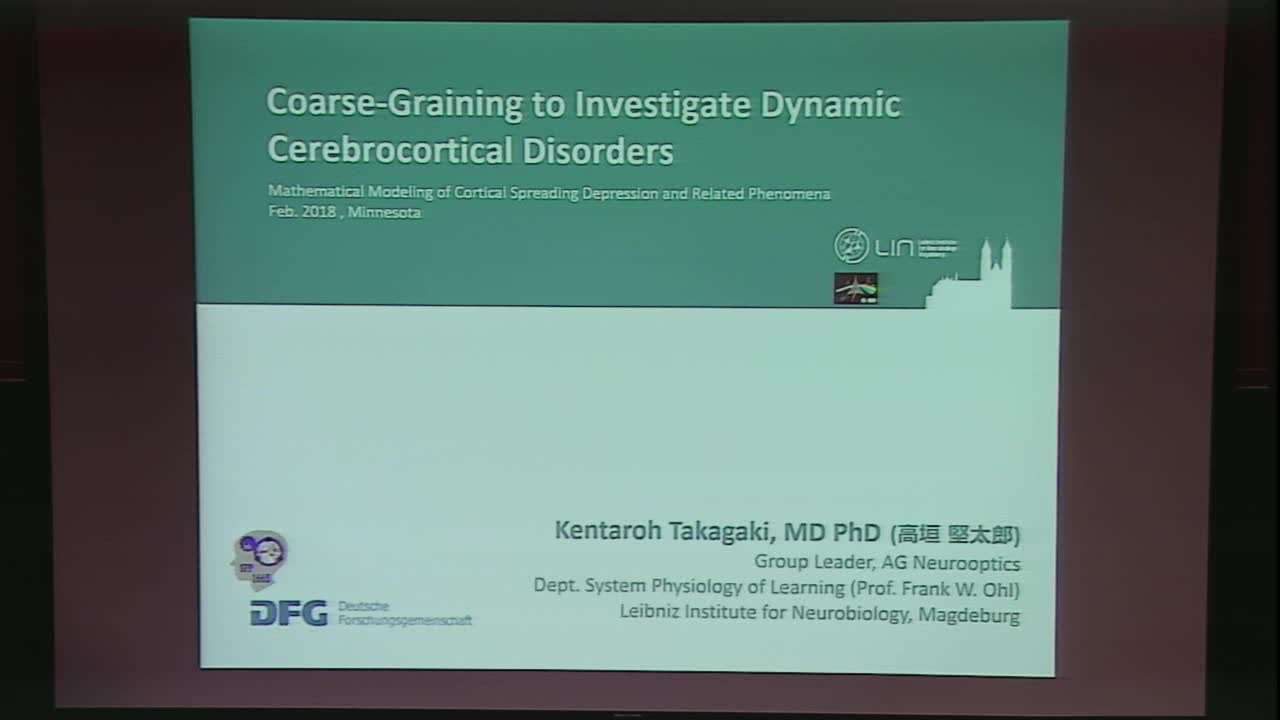Coarse-Graining to Investigate Dynamic Cerebrocortical Disorders
Presenter
February 12, 2018
Keywords:
- Spiral dynamics, epilepsy, migraine, complexity, coarse-graining
Abstract
Advances in multi-channel/multi-detector recordings and data analysis over the last decades have led to an explosion in the exploration of complex neural dynamics in mammalian cortex. Powerful methods have been applied to investigate such dynamics, including connectivity measures (correlation, causality, resting state synchrony, etc.), spatiotemporal pattern analyses, and finite-element modelling based on model neurons. However, the high dimensionality of the data itself leads directly to potential errors in programming of analysis algorithms and overinterpretation of statistically significant but translationally insignificant findings.
Given this situation, I advocate for the complementary use of the classical biological approach in translational neurology: the use of simplified preparations which may be limited in scope, but which highlight fundamental
principles. I illustrate this approach in particular with coarse-grained pharmacological models of epileptic activity, such as spiral dynamics. This will be supported by a discussion comparing scale differences in the pathophysiology of migraine and epileptiform disorders.
